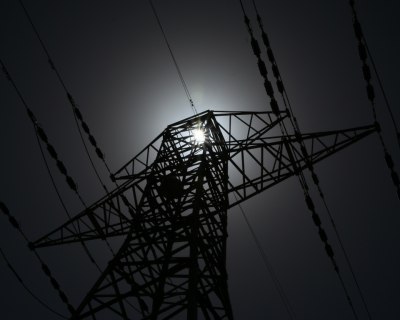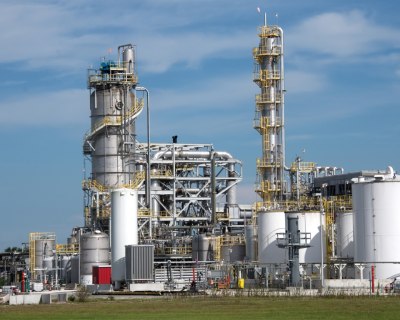
Ushering in America’s New Atomic Age: Three Takeaways from the House Oversight Hearing on Nuclear Energy Reform
Last week, the U.S. House Committee on Economic Growth, Energy Policy, and Regulatory Affairs held a timely oversight hearing on the outdated and burdensome regulations holding back America’s nuclear energy future. The testimony delivered a clear message: advanced nuclear power is ready to help meet our growing energy demands—but only if policymakers act to remove federal barriers.
Among the witnesses was Pelican ally Josh T. Smith, Energy Policy Lead at the Abundance Institute, who offered compelling testimony about how modern nuclear energy—particularly small modular reactors (SMRs)—can deliver energy abundance, economic opportunity, and environmental benefits.
Here are three key takeaways from the hearing that Louisiana leaders—and policymakers across the country—should take to heart:
- Prosperity Requires Power—And Nuclear Can Deliver It
“Our economic growth, technological progress, and improved quality of life all require more energy, not less,” Smith testified. “A world of energy abundance is a world of opportunity: for industry, for families, for national strength.”
Since its inception, nuclear power has contributed to America’s energy mix with reliable, emissions-free electricity—and Louisiana is a great example of that. The Pelican State is already home to two highly successful nuclear power generators—Entergy’s River Bend Station near St. Francisville and Waterford 3 in St. Charles Parish. Together, these facilities reliably produce more than 15% of the state’s electricity, all while emitting zero carbon emissions. They have operated safely for decades, providing consistent baseload power that keeps energy costs affordable for families and businesses and supports Louisiana’s critical industrial economy. These plants are living proof that nuclear power works—and that, with smart policy, Louisiana can do even more to lead in this vital sector.
- Bad Policy Is the Real Barrier to Nuclear Innovation
Smith made clear that the biggest obstacle to nuclear progress isn’t science—it’s regulation.
“For decades, American engineers built nuclear plants swiftly, safely, and affordably,” he explained, citing Connecticut Yankee, a plant completed in five years at the modern equivalent of just $1 billion. That kind of success has been buried under decades of red tape.
Key regulatory barriers include:
- Arbitrary safety rules like ALARA and the Linear No-Threshold (LNT) model that drive up costs without meaningful benefits.
- Inflexible Nuclear Regulatory Commission (NRC) processes that stifle the deployment of promising technologies like small modular reactors.
- Exaggerated risk narratives that ignore decades of safe operation and lessons learned.
- Persistent myths about nuclear waste, which is minimal, manageable, and, in many cases, recyclable.
And the permitting landscape is even worse. “It takes 10 years to build a transmission line—seven of those are spent on paperwork,” Smith noted. “Only in broken systems does a project require a governor’s intervention to move forward.”
- States Are Leading Where Washington Fails
Fortunately, federal paralysis isn’t the whole story. Smith emphasized that over 250 nuclear-related bills have been introduced in state legislatures in just the past two years. States like Louisiana and Utah are taking charge—cutting red tape, supporting new nuclear development, and building energy systems that work.
“Governors and state legislators are leading the opposite charge [from the past]—pushing to enable nuclear power in their states,” Smith said.
The message is clear: states that act now can lead the next generation of American energy dominance. Once again, Louisiana is stepping up to lead the way.
Louisiana is Leading the Way
In a bold move toward regulatory modernization, the Louisiana Legislature passed Senate Bill 127 by Sen. Adam Bass (R–Bossier City) during the 2025 Regular Session, a key reform aimed at unlocking the potential of small modular reactors (SMRs). This new law amends the state’s expedited permitting program to specifically support the development of advanced nuclear power. It directs the Louisiana Department of Environmental Quality (LDEQ) to create a streamlined permitting process for SMRs and similar technologies, allowing electric utilities and other qualified entities to fast-track environmental permits, licenses, and variances.
Critically, the law establishes a federal permitting parity program that enables expedited state review of nuclear projects aligned with federal collaboration—such as with the White House, Department of Energy, Department of Defense, or the Nuclear Regulatory Commission. This alignment ensures Louisiana can move in step with national efforts to modernize energy policy, reduce regulatory duplication, and empower private-sector innovation.
Although there are no current SMR projects proposed in Louisiana yet, this legislation ensures the state is ready to move quickly when opportunities arise. Across the country, SMR projects are under active review, and the first reactors are projected to be built within the next decade.
Challenging Federal Overreach
As part of its commitment to advancing free-market energy solutions, Louisiana also recently joined several other states in suing the federal government over its one-size-fits-all approach to nuclear regulation. The lawsuit argues that SMRs—which are smaller, safer, and produce less waste than traditional reactors—should not be governed by the same outdated rules that apply to large-scale nuclear plants.
This legal action reflects a growing bipartisan consensus that federal red tape is holding back America’s nuclear future. The Pelican Institute supports this push to modernize nuclear regulation and ensure that state leaders can respond nimbly to growing energy demands with flexible, next-generation solutions.
Why SMRs Matter for Louisiana’s Future
According to the U.S. Department of Energy, SMRs are between one-tenth and one-fourth the size of conventional reactors and can generate between 10 and 300 megawatts of electricity—making them ideal for both grid-scale use and on-site industrial applications. For context, Entergy’s two existing nuclear plants in Louisiana—River Bend and Waterford 3—generate a combined 2,142 megawatts.
SMRs offer a complementary opportunity. They can provide flexible, scalable, zero-emission energy, particularly in areas where building large-scale power plants isn’t practical. And with rising energy demands from data centers, AI infrastructure, and energy-intensive industries, having modular, dispatchable options will be critical to Louisiana’s long-term growth.
Pelican’s Perspective
At the Pelican Institute, we believe Louisiana isn’t just capable of leading America’s nuclear renaissance—we’re already doing it.
From enacting groundbreaking legislation like Senate Bill 127 to joining the national legal fight for regulatory reform, Louisiana policymakers are proving that our state is serious about securing an abundant, affordable, and reliable energy future. We have world-class engineering talent, industrial demand, and a deeply rooted culture of innovation.
Now is the time to stay the course.
With energy demand soaring—from AI and advanced manufacturing to data centers and electrified industry—Louisiana’s early steps toward nuclear reform are laying the foundation for long-term prosperity. But continued progress will require vigilance: resisting backsliding, cutting red tape, and ensuring permitting programs are fully implemented and aligned with free-market principles.
Let’s keep up the good work. Let’s double down on the policies that empower innovation and investment. And let’s make sure Louisiana remains a national model for how states can lead the way in ushering in a new atomic age—where energy abundance drives opportunity for every family and business across our great state.



